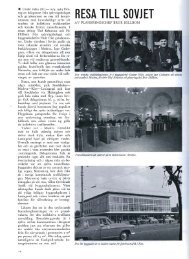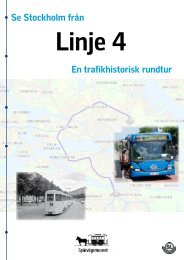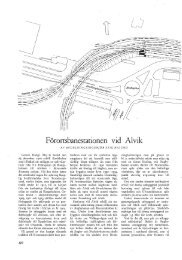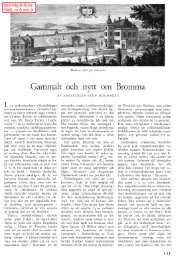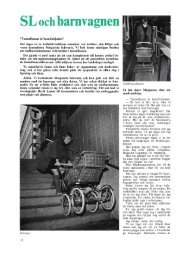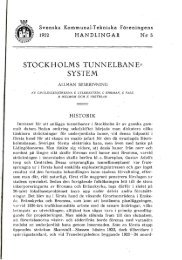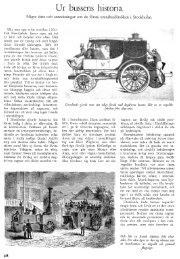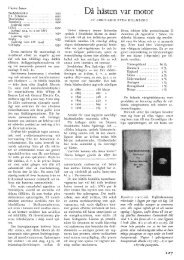Reliability of Stockholm Subway - Index of
Reliability of Stockholm Subway - Index of
Reliability of Stockholm Subway - Index of
Create successful ePaper yourself
Turn your PDF publications into a flip-book with our unique Google optimized e-Paper software.
words, the share <strong>of</strong> commuters, which arrive during the intervals that are longer than<br />
regular one, will meet overcrowding at the platform according to our assumption.<br />
3.2.2 Waiting times<br />
Talking about irregular headways causing crowding effect in the system it is<br />
necessary to mention that it also affects waiting time <strong>of</strong> commuters.<br />
Let‟s suppose that passengers randomly arrive to the station. When the trains arrive at<br />
perfect and regular intervals the average waiting time <strong>of</strong> the passengers according to<br />
the Theory <strong>of</strong> Probability is equal to the half <strong>of</strong> the headway:<br />
. (3.2)<br />
However, in case <strong>of</strong> irregular service the average waiting time will increase. It can be<br />
explained with the example <strong>of</strong> famous Bus paradox, for instance, described in<br />
Gunther (2001).<br />
Let‟s assume that buses arrive independently to the bus stop with average headway 10<br />
minutes. The first case is that the waiting time will be equal 5 minutes, according to<br />
formula (3.2). Nonetheless, we know that buses arrive independently and intervals<br />
between them vary in length. The point is if the passengers arrive to the stop purely<br />
randomly – it is more likely that they will arrive during the longer intervals than<br />
during the short ones. The explanation is that the intervals with longer duration are<br />
more frequently represented than the short intervals in the scale <strong>of</strong> the total length <strong>of</strong><br />
the studying period. The answer to that example is based on that the waiting time in<br />
case <strong>of</strong> irregular service depends on the variability <strong>of</strong> headways. The more headway<br />
varies the more considerable waiting time grows:<br />
(3.3)<br />
where H – is an average headway during the studying period and CV is the coefficient<br />
<strong>of</strong> variation.<br />
25





